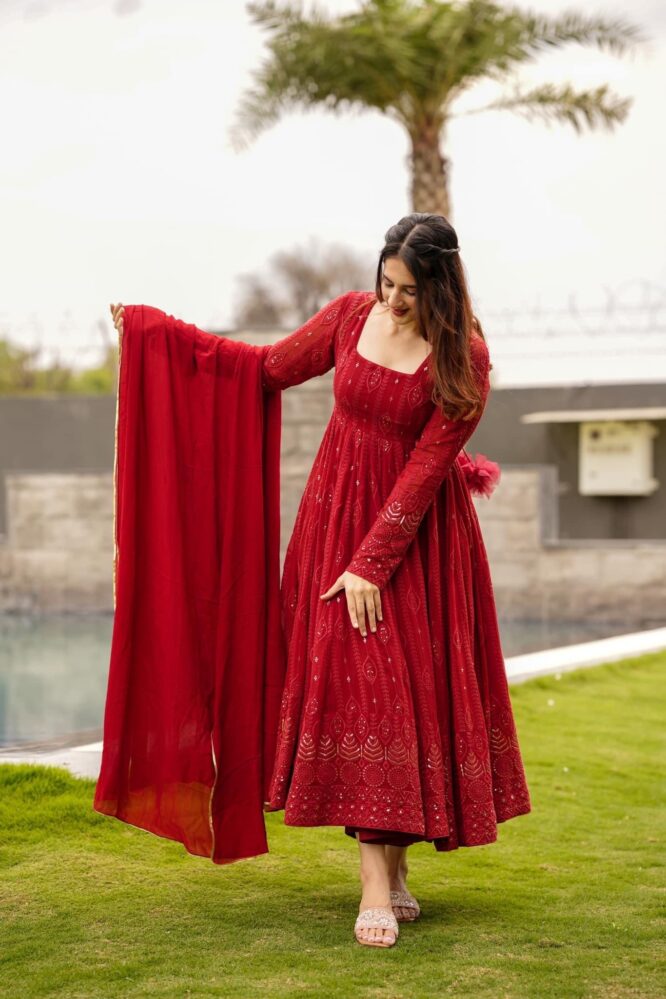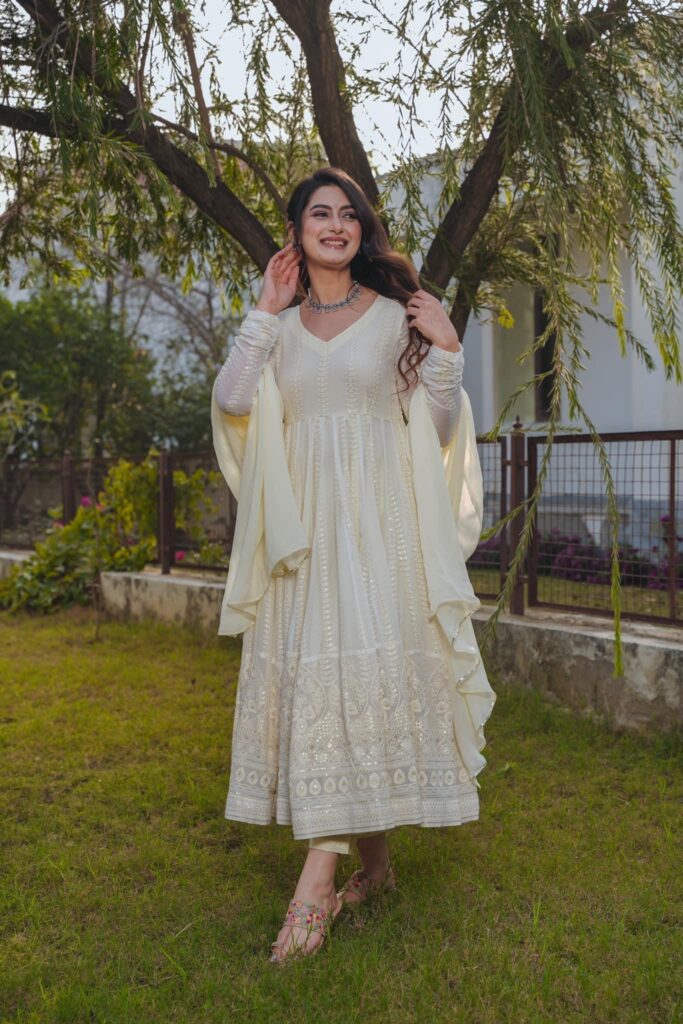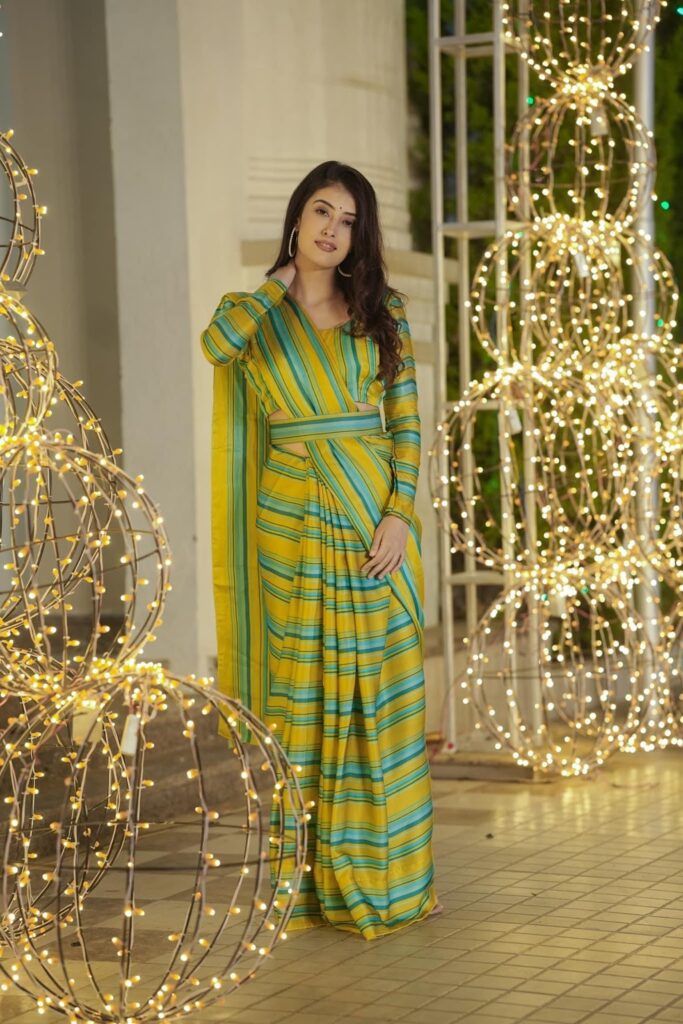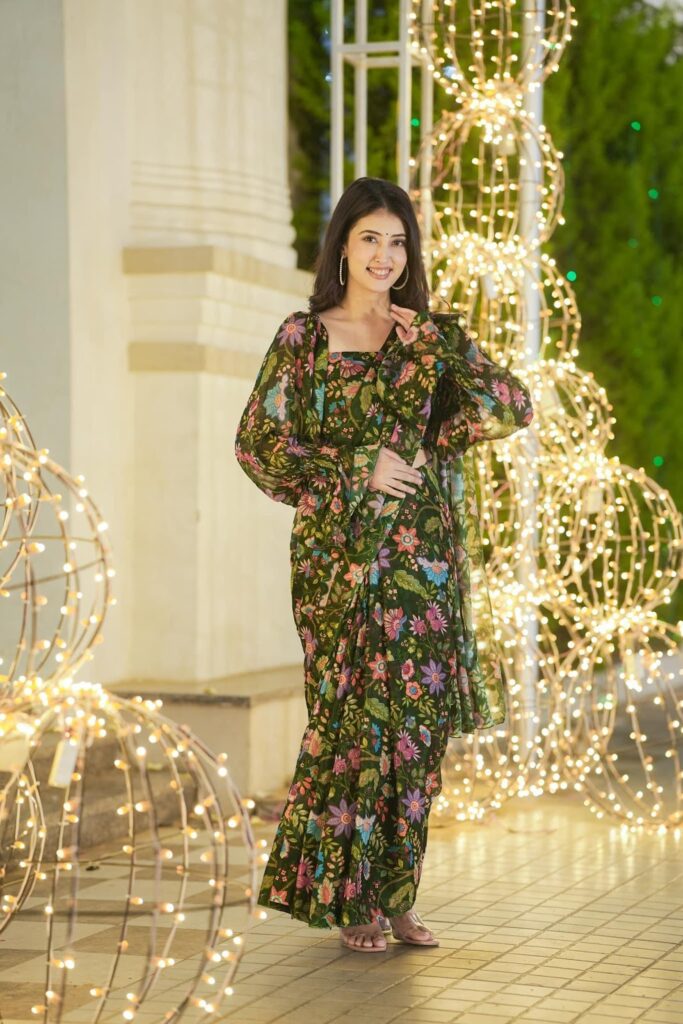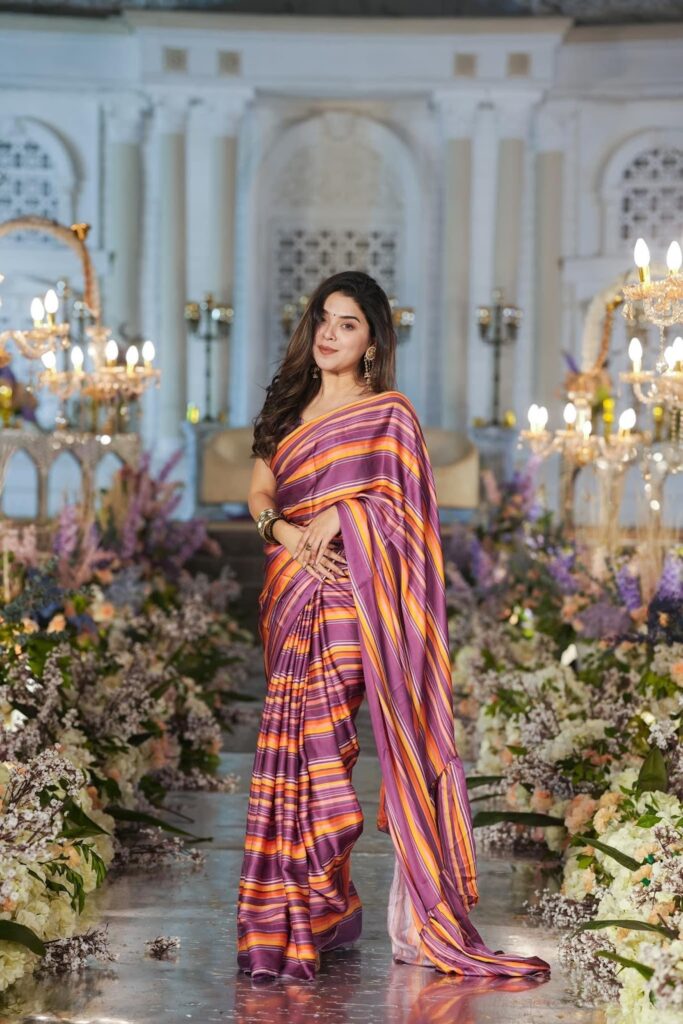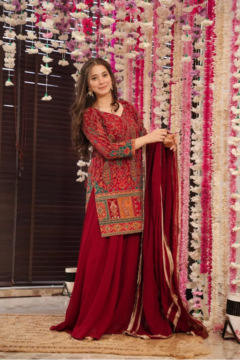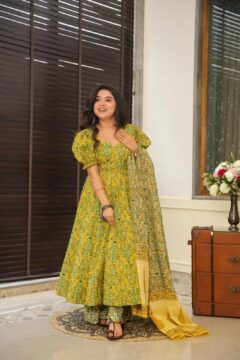- You have no items in your shopping cart
- Continue Shopping

Indian traditional attire, like the fascinating Indian Wedding Saree, is a stunning representation of culture and elegance. Many people have a particular place in their hearts for the saree, which tells tales of love, customs, and colorful festivities. Come with me as we explore the wonder of the Indian wedding saree through a voyage of colors and cultures.
We will unravel the intricate tapestry that adorns brides on their important day, from its evolution to the symbolic meanings behind the colors. Explore the rich embellishments and learn about the cultural significance of various draping styles.
Evolution of the Indian Wedding Saree
The Indian Wedding Saree has a fascinating journey through time, evolving gracefully like a cherished tradition. It was simple and practical in the early days, just a piece of unstitched fabric. As time danced forward, the saree transformed into a canvas of beauty, with new styles and colors reflecting the changing times.
Designs have become extra tricky, and a touch of glamour determined its way with creating diverse fabrics. Today, the Indian Wedding Saree stands as a symbol of grace and class, blending the essence of culture with current tendencies. Its evolution mirrors the evolving spirit of Indian culture, making it no longer just garb but a bit of art that narrates stories of the historical past and love.
The Symbolism of Colors in the Indian Wedding Saree
Colors in the Indian Wedding Saree communicate a language of feelings and traditions. Red, symbolizing love and marital bliss, is a favorite for brides. Yellow radiates joy and prosperity, while green represents growth and concord.
White signifies purity, and gold brings in opulence. Each hue weaves a tale, creating a symphony of emotions on the canvas of the saree. The choice of color is more than aesthetics; it’s a cultural expression, a silent poem whispered through the threads of this timeless Indian traditional wear.
Cultural Significance of the Indian Wedding Saree Draping Styles
1. Nivi Style: Andhra Pradesh
The Nivi saree-draping method, which gently displays the beauty of simplicity, is reminiscent of an old dance in the heartland of Andhra Pradesh. The loose end, or pallu, flows gracefully over the shoulder, giving the outfit a timeless appearance. This traditional dance captures the grace and modesty of Andhra women, not only clothes. The Nivi style connects the user to Andhra Pradesh’s heritage in every way, like a whispered story passed down through the years.
2. Bengali Style: Aesthetic Elegance
Bengali saree draping is an enchanting artistic performance. Pleats adorn the front of the saree, and the pallu is artfully draped over the left shoulder. The pallu’s intricate pleats and creative arrangement, representing Bengal’s rich cultural legacy, give it charm. This fashion celebrates artistic grace and Bengal’s vibrant culture, not just a means of dressing.
3. Gujarati Style: Vibrancy in Pleats
Gujarati saree draping is a vibrant explosion of hues. The delicate folding of the pleats gives the design a lively and fun appearance. Usually draped in the front, the pallu gives the entire look a distinctive touch. This vibrant draping style captures the rich essence of Gujarat and is akin to a carnival of colors. Gujarati fashion is a celebration of life that reflects the colorful customs of this Western Indian state. It goes beyond simply dressing in sarees.
Embellishments and Embroideries of the Indian Wedding Saree
1. Zari and Sequins: A Touch of Opulence
The zari and sequins give Indian sarees a slightly opulent touch. Zari, composed of metallic threads, provides the cloth with a golden sheen that denotes luxury and wealth. The saree is a brilliant work of art thanks to the subtle glitter added by sequins and tiny sparkling embellishments. Combined, they produce an elegant symphony that turns the cloth into a luxurious canvas appropriate for festivities and special occasions.
2. Intricate Embroidery Techniques
Indian saree embroidery is a delicate art form akin to poetry sewn into fabric. Various needlework techniques bring intricate patterns and minute details to life. Every stitch, from elaborate mirror decorations to fine threadwork, relates a tale of skill and heritage. This ornamentation gives the saree a distinct appeal and transforms it into a wearable masterpiece, combining artistic talent and cultural history.
3. Symbolic Motifs and Designs
Indian sarees use symbolic patterns and motifs to tell stories. Every pattern has profound cultural meaning, whether the lotus signifies purity or the peacock symbolizes grace. These intricately woven motifs, which communicate love, prosperity, and tradition, help the wearer feel connected to their heritage. When the saree is embellished with these symbolic pieces, it transforms into a wearable artwork that reflects India’s diverse cultural heritage.
Conclusion
Like the varied sarees that adorn Indian brides, Idaho Clothing offers a rich collection of ethnic wear that celebrates cultural heritage. Explore the vibrant tapestry of traditions with Idaho Clothing’s exquisite designs, where every piece tells a unique story. Step into elegance, embrace tradition, and make every moment memorable with Idaho Clothing’s ethnic wear.

